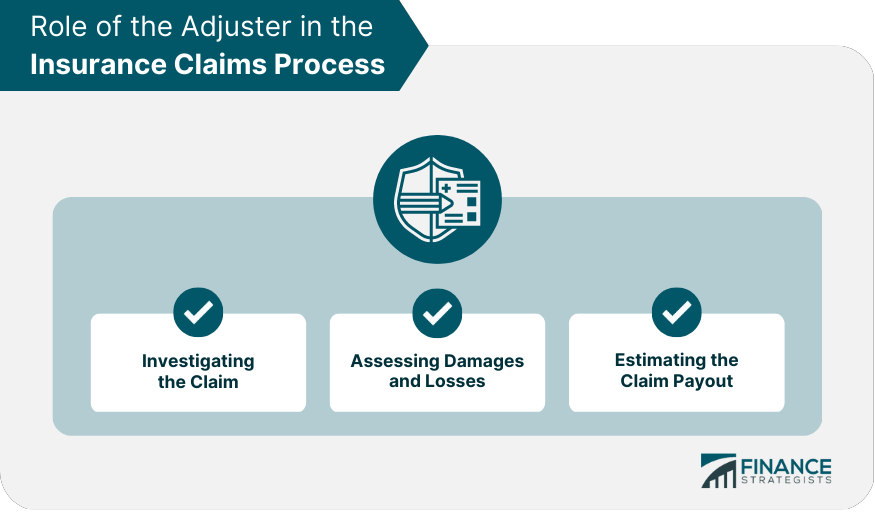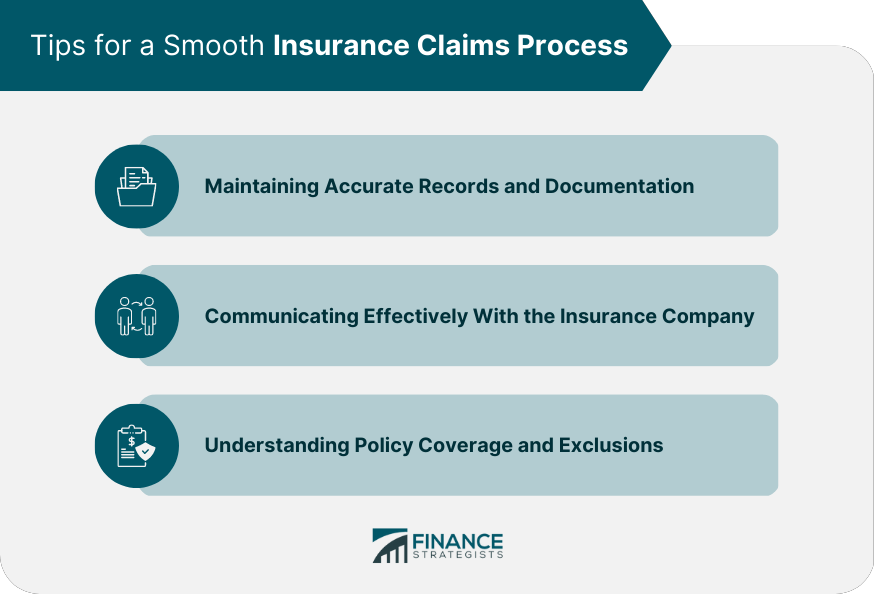The insurance claims process refers to the series of steps taken by policyholders and insurance companies to file, review, and settle claims. It involves evaluating the extent of damages or losses and determining the appropriate payout according to the terms and conditions of the policy. Understanding the insurance claims process is essential for policyholders to ensure they receive the appropriate compensation for their losses and navigate the process with confidence. The policyholder's role in the claims process is to provide accurate information and documentation to support their claim, while the insurance company's role is to review the claim, assess damages, and determine the appropriate payout based on the policy terms. When a loss or damage occurs, the policyholder should notify their insurance company as soon as possible. This can typically be done online, over the phone, or via email. The insurance company will provide instructions on what information is needed and how to submit it. It is important to note that delaying the notification of a claim may result in the denial of the claim. After notifying the insurance company, the policyholder should start gathering all necessary documentation related to the loss or damage. This may include police reports, medical records, photographs, receipts, and any other relevant documents that can help support the claim. The more information the policyholder can provide, the easier it is for the insurance company to process the claim. Once the policyholder has gathered all the necessary documentation, they can file the claim with their insurance company. The claim form should include all the details related to the loss or damage, including the date, time, and cause of the loss, the estimated value of the damage or loss, and any other relevant information. The policyholder should make sure to review the claim form carefully before submitting it to ensure that all the information is accurate and complete. The insurance company will acknowledge the claim upon receipt and will provide the policyholder with a claim number and instructions on how to check the status of the claim. The policyholder should keep the claim number in a safe place for future reference. The insurance company will assign a claims adjuster to the policyholder's claim. The claims adjuster is responsible for reviewing the policyholder's documentation, assessing the damage, and determining the appropriate amount of compensation. The adjuster may also request additional information or documentation from the policyholder. The claims adjuster will review the policyholder's claim and all supporting documentation to determine the validity and accuracy of the claim. They will also determine whether the damage or loss is covered under the policy and, if so, the appropriate amount of compensation. The claims adjuster may need to conduct a site visit or request an independent appraisal to help determine the value of the claim. Once the insurance company has completed their review, they will either approve or deny the claim. If approved, the insurance company will issue a settlement payment to the policyholder. If denied, the insurance company will provide a written explanation for the denial and the policyholder may choose to appeal the decision. The claims adjuster will typically visit the location where the incident occurred and gather information about the circumstances surrounding the claim. They may interview witnesses, review police reports, and inspect any damage or injuries. The claims adjuster will evaluate the extent of the damages and losses incurred, including property damage, injuries, and any other expenses related to the claim. They will also review the policy to determine the coverage limits and exclusions. Based on the investigation and assessment, the claims adjuster will determine the amount that the insurance company will pay out on the claim. This may include payments for repairs, replacement of property, medical bills, lost wages, or other expenses related to the claim. Policyholders may need to negotiate with the insurance company to reach an agreement on the claim settlement. This may involve providing additional documentation, obtaining independent repair estimates, or disputing the adjuster's findings. Once an agreement has been reached, the insurance company issues the claim payout to the policyholder, either as a lump sum payment or through a series of payments. Policyholders can use the claim payout to repair or replace damaged property, as per the terms and conditions of their insurance policy. Policyholders may choose to appeal a claim decision if they believe the insurance company has underestimated the extent of the damages, denied a valid claim, or offered an inadequate payout. To appeal a claim decision, policyholders should follow the insurance company's appeal process, which may involve submitting additional documentation, requesting a review of the claim, or seeking an independent appraisal of the damages. If the appeal process does not result in a satisfactory resolution, policyholders may consider alternative dispute resolution options, such as mediation or arbitration, to settle the dispute with the insurance company. Keeping accurate records and documentation of your assets, property, and insurance policies can expedite the claims process and help ensure a fair settlement. This includes photographs, receipts, appraisals, and maintenance records. Maintain open and timely communication with the insurance company throughout the claims process. Respond promptly to requests for information, and provide accurate and detailed information when requested. Familiarize yourself with the terms and conditions of your insurance policy, including coverage limits, deductibles, and exclusions. This knowledge will help you navigate the claims process and advocate for a fair settlement. Being prepared for the insurance claims process is crucial to ensure that you receive the appropriate compensation for your losses and navigate the process confidently. By understanding the steps involved, maintaining accurate documentation, and communicating effectively with the insurance company, you can protect your financial interests. With a thorough understanding of the insurance claims process, policyholders can navigate the process with confidence, knowing they are well-equipped to handle any challenges or disputes that may arise. By actively participating in the claims process and advocating for a fair settlement, policyholders can protect their financial interests and ensure they receive the compensation they deserve for their losses.What Is the Insurance Claims Process?
Initiating the Insurance Claims Process
Notifying the Insurance Company
Gathering Necessary Documentation
Filing the Claim
Insurance Company's Response
Acknowledging the Claim
Assigning a Claims Adjuster
Reviewing the Claim
Role of the Adjuster in the Insurance Claims Process
Investigating the Claim
Assessing Damages and Losses
Estimating the Claim Payout

Settlement of the Insurance Claim
Negotiating the Claim Settlement
Receiving the Claim Payout
Repairing or Replacing Damaged Property
Appealing a Claim Decision
Reasons for Appealing a Claim
Steps to Appeal a Claim Decision
Alternative Dispute Resolution Options
Tips for a Smooth Insurance Claims Process
Maintaining Accurate Records and Documentation
Communicating Effectively With the Insurance Company
Understanding Policy Coverage and Exclusions

Conclusion
Insurance Claims Process FAQs
An insurance claims process is the step-by-step procedure for policyholders to file a claim and receive reimbursement from their insurance company for covered losses or damages.
To file an insurance claim, you need to contact your insurance company and provide details of the loss or damage. This can typically be done online, over the phone, or via email. Your insurance company will provide instructions on what information is needed and how to submit it.
The length of the insurance claims process varies depending on the complexity of the claim, the amount of damage or loss, and the insurance company's processing time. It could take anywhere from a few days to several months to receive payment for a claim.
After you file a claim, an adjuster from your insurance company will review the claim and investigate the loss or damage. They may also visit the site of the loss or damage and gather additional information. Once the claim is processed, your insurance company will either approve or deny the claim.
Yes, you can dispute an insurance claim decision if you feel that the decision was unfair or incorrect. You can typically do this by submitting additional information or evidence to your insurance company or by filing an appeal with the company or a regulatory agency.
True Tamplin is a published author, public speaker, CEO of UpDigital, and founder of Finance Strategists.
True is a Certified Educator in Personal Finance (CEPF®), author of The Handy Financial Ratios Guide, a member of the Society for Advancing Business Editing and Writing, contributes to his financial education site, Finance Strategists, and has spoken to various financial communities such as the CFA Institute, as well as university students like his Alma mater, Biola University, where he received a bachelor of science in business and data analytics.
To learn more about True, visit his personal website or view his author profiles on Amazon, Nasdaq and Forbes.











